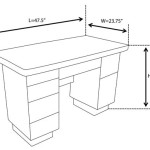What Vegetables Can You Grow in Flower Pots?
Growing vegetables in flower pots offers a convenient and space-saving way to cultivate fresh produce. With a bit of planning and care, you can enjoy a bountiful harvest right on your patio, balcony, or even indoors. While some vegetables thrive in containers, others may require specific conditions or varieties suitable for limited root systems. This article explores some of the best vegetables to grow in flower pots, providing insights into their suitability and care requirements.
Easy-to-Grow Vegetables for Pots
Several vegetables are known for their adaptability to container growing. These include:
- Lettuce and Leafy Greens: Lettuce, spinach, kale, and arugula are excellent choices for pots. They require well-draining soil and consistent moisture but can tolerate partial shade.
- Radishes and Carrots: Root vegetables like radishes and carrots can be grown in pots, although they may require deeper containers. Short varieties of carrots or those specifically bred for container gardening are ideal.
- Tomatoes: Cherry tomatoes, patio tomatoes, and dwarf varieties are well-suited to container cultivation. Choose pots at least 12 inches in diameter and provide adequate support for the plants.
- Peppers and Chili Peppers: Peppers thrive in pots, especially compact and bush varieties. They need plenty of sunlight and warm temperatures.
- Herbs: Most herbs, such as basil, parsley, rosemary, thyme, and mint, flourish in containers. Choose pots with good drainage and sunny locations.
Considerations for Choosing Potted Vegetables
When selecting vegetables for pot cultivation, several factors should be considered:
1. Pot Size and Drainage
Choosing the right pot size is crucial for the successful growth of vegetables. The container should be large enough to accommodate the plant's root system and provide ample space for growth. A pot that is too small will restrict root development and may lead to stunted growth. Additionally, pots with drainage holes are essential to prevent waterlogging and root rot.
2. Sunlight Requirements
Most vegetables require at least six hours of direct sunlight per day. When choosing a location for your potted vegetables, ensure it receives adequate sunlight. If you have limited sunlight, consider selecting varieties that tolerate partial shade.
3. Soil and Fertilizer
Use a high-quality potting mix that is well-draining but retains moisture. Alternatively, you can create your own mix by combining potting soil with compost and vermiculite. Regular fertilization is essential for healthy growth. Choose a balanced fertilizer formulated for vegetables and follow the instructions carefully.
4. Watering and Moisture
Consistent watering is vital for container-grown vegetables. Check the soil moisture daily and water thoroughly when the top inch of soil feels dry. However, avoid overwatering, which can lead to root rot.
Tips for Growing Vegetables in Pots
Here are some tips for maximizing your success with potted vegetables:
- Start with healthy seedlings or transplants: Starting from seedlings gives your vegetables a head start and allows for a quicker harvest.
- Pinch off flowers and side shoots: For some vegetables, such as tomatoes, pinching off flowers and side shoots can encourage better fruit production.
- Maintain consistent fertilization: Regular fertilization is crucial for providing essential nutrients and maximizing yields.
- Protect from pests and diseases: Regularly inspect your plants for pests and diseases, and take prompt action to control any issues.
Growing vegetables in flower pots can be an enjoyable and rewarding experience. By selecting appropriate varieties, providing suitable conditions, and following proper care practices, you can enjoy fresh, homegrown produce right in your own backyard or on your patio.

Vegetables You Can Grow In Small Pots Space Gardening

The Best 11 Vegetables To Grow In Pots And Containers Gardener S Path

Easiest Vegetables To Grow In Flower Pots

Easiest Vegetables To Grow In Flower Pots

20 Best Vegetables For Container Gardening Growing In The Garden

20 Best Vegetables For Container Gardening A Piece Of Rainbow
Vegetables In Containers Rhs Gardening

Container Gardening Ten Easy Vegetables To Grow In Pots And How Do It Growing Family

How To Grow Veggies In Pots And Planters At Home

Growing Vegetables In Pots Containers Saga
Related Posts








